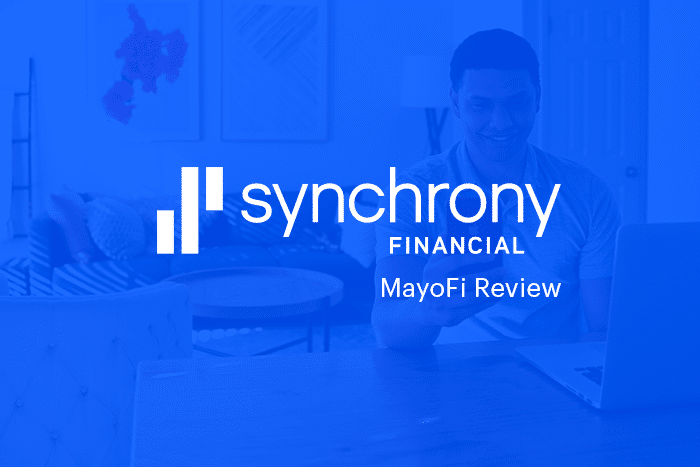
Key Points
- A high-yield savings account works by giving you higher-than-average interest on your savings.
- Unlike a traditional savings account which only gives you between 0.01% to 0.06% APY, high-yield savings accounts can yield as much as 0.70% to 2.36% APY.
- Most high-yield savings accounts are found at online banks.
A savings account at your bank is pretty straightforward. You deposit your money, your money is safe, your money earns interest, you have access to it whenever you need it. Simple, right? But what about a high-yield savings account?
You’ve likely seen this term tossed around on just about every finance website. Your friends or relatives may even brag about how much interest they are earning on their savings in their high-yield savings account. Now you’re curious and want to learn more.
Lucky for you, you’re in the right place. Today, you will learn everything you need to know about how a high-yield savings account works. By the end of this article, you’ll be able to start earning high interest on your savings, just like your friends.
Let’s get started.
How does a high-yield savings account work?
- What is a high-yield savings account?
- How does a high-yield savings account work?
- How to choose a high-yield savings account
- Best uses for a high-yield savings account
- High-yield savings account FAQs
What is a high-yield savings account?
A high-yield savings account is a type of savings account that can earn you as much as 20x over the national average of a traditional savings.
What does this mean exactly? The national average return on a traditional savings account is just 0.05%, with many banks having returns as low as 0.01%. In contrast, a high-yield savings account can earn you over 1% in interest on your savings.
At one point, the Citi Accelerate high-yield savings account would have earned you 2.36% on your savings. That has since changed due to the changing Fed rates. But the point remains—high-yield savings accounts will earn you significantly more money on your savings than a traditional savings.
So, what’s the catch? After all, there’s no way for you to earn a 1% return on your savings without risking something, right? Wrong. A high-yield savings account is simply a type of savings account. They come loaded with the same benefits that you would get from a traditional savings account, this includes:
- FDIC insured
- Access your money at any time without a penalty
- ATM access
- Earns interest
How does a high-yield savings account work?
Banks can offer higher interest on high-yield savings accounts thanks to advancements in technology. Many banks have automated parts of their systems and moved services online. As a result, they no longer need to pay for human administrative services. They can instead pass these saving along to you with higher interest rates.
High-yield savings accounts are typically internet-only accounts. You won’t usually find them offered at your local small bank or credit union. However, this doesn’t mean you are out of luck if you do bank with a local credit union.
It’s not uncommon for many Americans to have multiple bank accounts. In fact, if it makes financial sense to move your long-term savings out of your low-interest savings account into a high-yield savings account, then you should consider doing it.
It’s a simple task to link a high-yield savings account to your primary account. Although transferring money can take a couple of days, it’s worth it for the substantial amount of interest you’ll earn over time.
How to choose a high-yield savings account
Now that you’re more familiar with what a high-yield savings account is, it’s time to learn how to choose one. Here are three factors you should consider when selecting a high-yield savings account.
Annual percentage yield (APY)
The APY, or annual percentage yield, is the most important factor to consider when deciding on a high-yield savings account. In fact, a high-yield savings account is only worth it if the APY is above average.
For instance, if the APY at your local bank’s savings account is 0.06%, then the APY on a high-yield savings account should be much higher to even be worth considering.
APY is the amount of money your savings earn in one year, including compound interest. Compound interest is the interest you make on your original deposit plus interest on the earnings.
Simply put, when you earn interest on your original deposit, you’ll earn more interest on top of your interest earned. For example, say you deposit $1,000 into a high-yield savings account with a 1% APY. After one year, your savings would be worth $1,126.83, not $1,100. The $26.83 in extra interest is a product of compounding interest.
Minimum deposit requirements
When choosing a high-yield savings account, you’ll want to make sure you’re aware of any minimum deposit requirements. Some high-yield savings accounts will have minimum opening deposit requirements of up to $10,000. This means to open an account, you would need to deposit at least $10,000.
Fortunately, many of the best high-yield savings accounts have minimum deposits of under $100 or even zero. This means you can start taking advantage of higher returns on your savings without needing a large initial investment.
Minimum balance requirements
Similar to a minimum deposit requirement, some banks will also require you to maintain a minimum balance. Failing to stay at or above the minimum balance could result in unnecessary fees that could eat into your high-interest earnings.
It’s important that you read the fine print before opening a high-yield savings account to make sure you aren’t penalized for dropping below a certain balance. If a high-yield savings account does have minimum balance requirements, you’ll need to be realistic with yourself and be sure you can maintain that minimum. If you can’t, regardless of how high the APY, you may need to look elsewhere.
Best uses for a high-yield savings account
Before you officially open a high-yield savings account, let’s first discuss some use cases for one. Knowing how you can use a high-yield savings account may give you some ideas or help you clarify your goals.
Emergency funds
There are plenty of reasons why you would benefit from having an emergency fund. Among many reasons, a few include:
- Car trouble
- Home repair
- Medical emergencies
- Job loss
- Pet emergencies
- Surprise pregnancy
We recommend that you maintain a savings of at least three to six months worth of living expenses. This way, if you have any unexpected expenses or emergencies, you won’t be caught off guard.
If you need a little help saving your money, you can check out both Acorns and Stash. Both apps have auto-saving features that have helped millions of Americans save money fast, without the pain.
For example, both apps have a feature called Round-Up, which rounds up all of your purchases to the nearest dollar. The app then takes the difference and either saves it or invests it, whichever you prefer.
Short-term savings
Another good use for a high-yield savings account is for short-term savings. You can use short-term savings for things like vacations, a down payment on a new car, or gifts for the upcoming holidays.
Ideally, you should only put money into a short-term savings account that you intend on using in less than one year. Because you’ll need access to your money sooner than later, it wouldn’t be in your best interest to invest it somewhere outside of your savings.
» See more: 15 Best Short-Term Investments
For example, if you invested your short-term savings into the stock market, and the market suddenly crashes, you’ll either have to wait for the market to recover or eat the losses and take out your money.
Long-term savings for larger purchases, such as a home or wedding, would benefit more from being invested in stock or bond ETFs. However, the interest you’ll receive on a high-yield savings account is good enough for smaller purchases.
Large expenses
Your biggest concern when saving money long-term for large expenses is inflation. The longer your money sits and doesn’t earn interest, the less valuable it becomes. $100 today will not be worth $100 next year. For this reason, we generally recommend you put your savings to work in a brokerage account.
The gains you receive by investing your savings into stock or bond ETFs far exceed the inflation rate. However, if you are more risk-averse and prefer to keep your savings clear of any investing, a high-yield savings account will work.
The interest you receive in a high-yield savings account typically won’t surpass the inflation rate. However, it will protect your money more than a traditional savings account.
When it comes to saving money long-term, your primary goal should be capital preservation. You can’t preserve your capital if you are losing it to inflation.
To give you an idea, let’s take $100. Say you put $100 into a traditional savings account that only earns you 0.01% APY. After one year, you’d only receive $0.01 in interest. That’s right, one penny. However, the average inflation rate tends to fall between 2%–3% each year. That means your $100 sitting in savings will only be worth $98–$97 next year. Do you see the problem?
The interest rate on your bank’s savings account isn’t high enough to curb your losses to inflation. However, if you use a high-yield savings account, you’ll have more protection because of the higher interest rate earned on the account.
High-yield savings accounts FAQs
Are high-yield savings accounts FDIC insured?
Yes, high-yield savings accounts are FDIC insured up to $250,000. Depositing your money into a high-yield savings account is not different from depositing it into a traditional savings account—both are savings accounts.
Can you lose money in a high-yield savings account?
You cannot lose money in a high-yield savings account unless your deposit exceeds the $250,000 FDIC limit. A high-yield savings account is not like investing in stocks or bonds, where you have the potential for big loss.
Are high-yield savings accounts worth it?
Yes, high-yield savings accounts are worth it. By using one, you really have nothing to lose. In fact, you can only benefit from them because the interest you get on your savings is sometimes over 20x that of a traditional savings account. And who doesn’t like to earn more money?
Conclusion
A high-yield savings account is not any different than a traditional savings account. They are simply savings accounts that give you higher returns on your savings.
In this article, you’ve learned what a high-yield savings account is, how to choose one, and the best uses for one. All you have to do now is take action. Find a bank that offers high-yield savings accounts that meet your criteria. After that, you’ll be well on your way to earning 20x above the national average.
About the author








